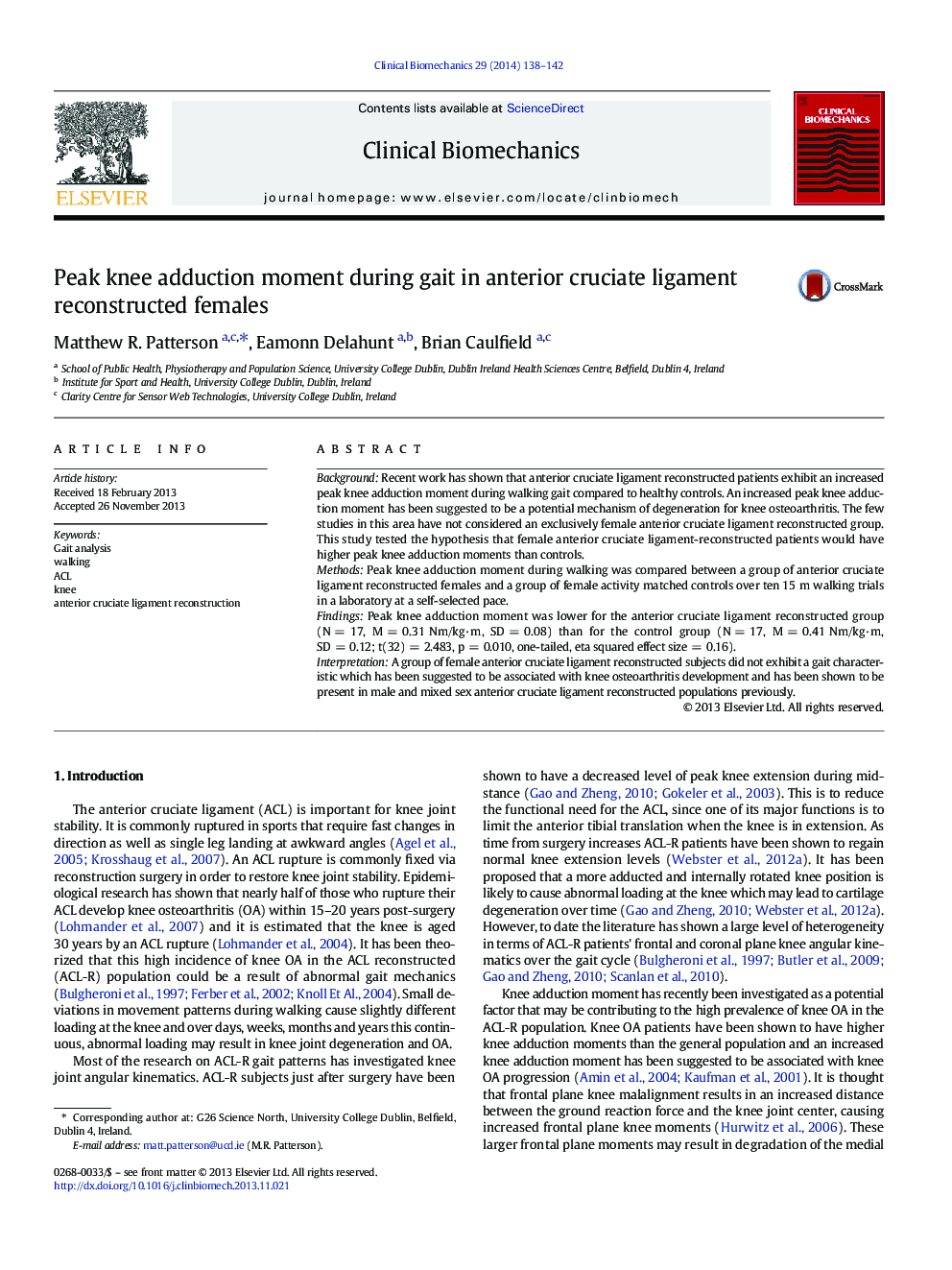| Article ID | Journal | Published Year | Pages | File Type |
|---|---|---|---|---|
| 6205011 | Clinical Biomechanics | 2014 | 5 Pages |
BackgroundRecent work has shown that anterior cruciate ligament reconstructed patients exhibit an increased peak knee adduction moment during walking gait compared to healthy controls. An increased peak knee adduction moment has been suggested to be a potential mechanism of degeneration for knee osteoarthritis. The few studies in this area have not considered an exclusively female anterior cruciate ligament reconstructed group. This study tested the hypothesis that female anterior cruciate ligament-reconstructed patients would have higher peak knee adduction moments than controls.MethodsPeak knee adduction moment during walking was compared between a group of anterior cruciate ligament reconstructed females and a group of female activity matched controls over ten 15 m walking trials in a laboratory at a self-selected pace.FindingsPeak knee adduction moment was lower for the anterior cruciate ligament reconstructed group (N = 17, M = 0.31 Nm/kg·m, SD = 0.08) than for the control group (N = 17, M = 0.41 Nm/kg·m, SD = 0.12; t(32) = 2.483, p = 0.010, one-tailed, eta squared effect size = 0.16).InterpretationA group of female anterior cruciate ligament reconstructed subjects did not exhibit a gait characteristic which has been suggested to be associated with knee osteoarthritis development and has been shown to be present in male and mixed sex anterior cruciate ligament reconstructed populations previously.
